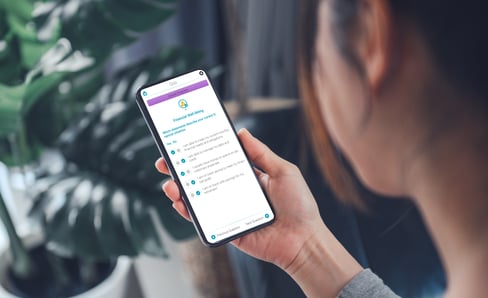Why Education is the Most Effective Tool to Encourage Long-Term Adoption of Healthy Habits

Organizations have been investing in health and wellness programs, but only a few have become truly successful because they don’t know how to incorporate education.
For many, the workplace can be a stressful environment, specifically when employees need to deal with impending deadlines, repetitive activities, and pressure from executives. According to stress.org, 65% of workers surveyed experienced difficulty due to workplace stress. Some high-stress industries, like the IT sector, have employees reporting overall life disruption.
Realizing that a healthy workforce is a key to their success, many businesses now include health and wellness programs as part of their corporate offerings. About 9 out of 10 organizations globally offer at least one form of wellness benefit, with wellness budgets projected to grow by 7.1% by 2027. However, there is a chance that once these programs end, unhealthy habits will start forming again.
With that in mind, these health and wellness programs should be paired with effective education sessions to promote long-lasting healthy habits among employees.
Here’s why education is a critical component of health and wellness plans and how to effectively educate employees.
Role of Education in Building Better Long-Term Habits
While companies have programs to support the health and well-being of their employees, many still fail to achieve long-term results. These programs are usually presented as a series of events, screenings, and presentations that don’t track data or results. When this happens, inconsistencies can occur and results will be notable for only the short term. 
That’s why organizations must place emphasis on modifying an employee’s behavior rather than focusing on incentivizing short-term achievements—and education is key to achieving this.
Habits are formed through repetition and building confidence, two areas that wellness programs need to nail down on. Education plays a huge role in continuing these new habits, as it helps increase awareness of why a behavioral change must happen. PatientBond is a prime example of a wellness platform that appeals to employees’ intrinsic motivations by helping them understand the personal benefits of a wellness program.
How to Integrate Education in Corporate Wellness Programs
Health and wellness programs are successful when they help employees adopt healthy habits and stick to them even without the promised incentives and rewards at the workplace. Here is how organizations can use education to promote long-term health and wellness:
Ask Questions
One of the basic things a health and wellness program coordinator must do is ask questions and listen to feedback. This step will help them gauge where employees are in their health and wellness journey.
A survey showed that most corporate wellness programs typically resonate more with employees that have healthy habits. Asking questions can help organizations assess what employees think are the most pressing issues when it comes to their health. This will also provide businesses with a better risk assessment for employees. This way, organizations can offer wellness programs directed towards the needs of the employees.
Fill the Gap
Once organizations have an idea of the employees’ health and wellness gap, they can find ways to fill it. Priority should be given to addressing the issues that may be inhibiting behavioral change. Often, the first instinct would be to come up with health education and awareness activities, such as providing online and offline resources that employees can read. While these are low-cost strategies, they are not as effective in promoting meaningful behavioral changes.
Lasting improvement requires a more interactive solution. Guidance and support will help employees be more confident when sharing their health issues. Harvard Health Publishing’s Online Learning provides educational courses delivered in engaging, easy-to-understand language. Each evidence-based interactive course is developed to help people change behaviors, manage health conditions, and achieve their goal of living healthier lives.
Make it Employee-Centric
Organizations should offer customized health and wellness programs to their employees that are tailored to relevant areas of wellness for each employee's needs and health goals. When a program is designed to meet these needs and goals, the level of commitment from employees will be higher.
Go beyond what these wellness programs would provide for the company by adding employee-relevant educational content. It is important to understand is how the program is designed to respond to the employees’ concerns, priorities, and readiness to make lasting behavioral changes.
Supporting a healthy and productive workforce depends on integrating education into health programs. However, meaningful content may not come standard with your wellness program, so consider adding additional integrations. Employee-centric educational health programs encourage workers to make behavioral changes a personal goal rather than something to do to comply with workplace requirements.
If you would like to offer a personalized wellness program for your employees, contact us today. We will be happy to connect you with the right resources.
About CoreHealth Technologies
CoreHealth Technologies Inc. is a total well-being technology company trusted by global providers to power their health and wellness programs. Our wellness portals help maximize health, engagement, and productivity for 3+ million employees worldwide. We believe people are the driving force of organizations and supporting them to make behavior changes to improve employee health is in everyone’s best interest. With the most flexibility, customizations, and integrations of any software in its class, CoreHealth’s all-in-one wellness platform helps grow great wellness companies. Simple to sophisticated, based on you. For more information, visit the CoreHealth website.
About The Author
Your Friends in Health at CoreHealth
CoreHealth by Carebook's Health and Wellness Team works hard to bring our readers informative and research validate health and well-being blog articles and resources that support your workplace wellness culture and wellness technology purchase decision.



